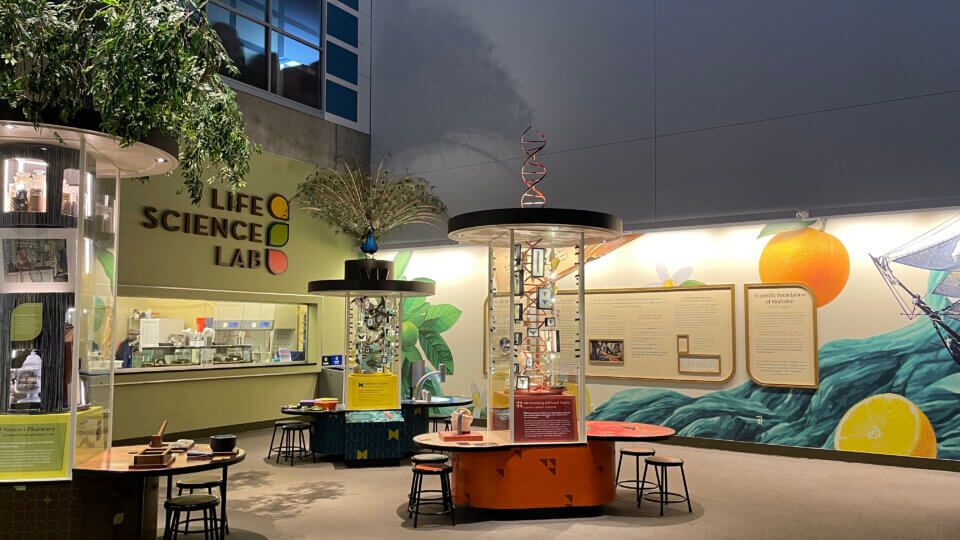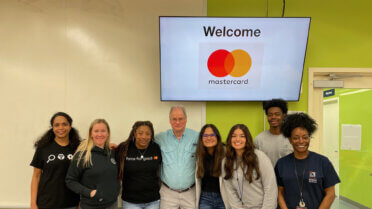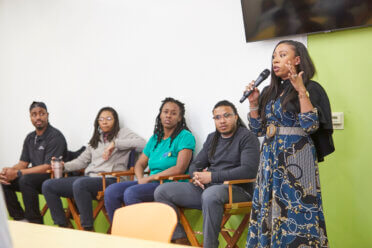Help us inspire a curiosity for STEM. Make a gift to the Science Center’s Curiosity Fund to help support STEM education programs in St. Louis.
Recently, the Science Center unveiled a refresh of the Life Science Lab’s Atrium, featuring new STEM experiences that invite guests to see the connections between nature and medicine. The refreshed gallery explores how scientists can look to nature in order to advance healthcare, from medicines of the past to the ways modern technology like DNA sequencing allows researchers to make new discoveries.
“My hope for the space,” says Dakota Price, Senior Educator, Life Sciences at the Science Center, “is to introduce guests to biomedical sciences in a way they don’t expect and hopefully to inspire a sense of connection between humans and the rest of the living world.”
Dakota points to how many of the challenges humans are looking to solve in medicine have already been solved by nature. “We’re at a place where we have the technology and understanding to harness that while still protecting other living things,” she adds.
The first of the gallery’s updated display towers will allow guests to discover how nature was used as medicine in the past. Added elements and activities show how mid-19th century medical practitioners used leeches as a cure-all for everything from boils to headaches, as well as the tools and simple methods (like chopping, grinding, and mixing) used in making medicines and how they were not that different from tools and techniques humans use now. In fact, the plants (and even the leeches) featured in this tower are still used in medicine today, although in a more refined, clinically tested form.
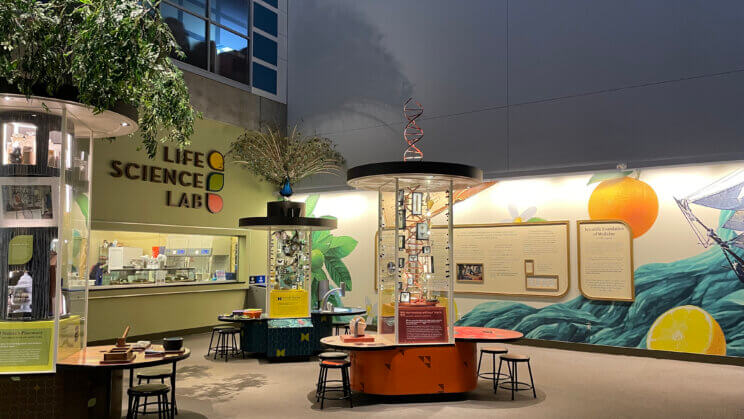
Another tower will illustrate ways nature can inspire new medical tools and techniques. Just as some researchers look to nature for new sources of pharmaceuticals, others look to nature as inspiration for designing new medical tools, unlocking new methods of delivering medicine, grafting tissue, and more.
Guests can also learn about the axolotl salamander and how scientists are studying them for their ability to regenerate damaged (or even missing) tissue in hopes of finding new ways to repair human tissue and speed up healing.
In another section, guests can find out about how scientists at MIT, the Massachusetts Institute of Technology, developed a “super sticky” surgical tape inspired by the nano-sized ridges and valleys on gecko feet, allowing the tape to work on hard-to-suture parts of the human body.
The third tower invites guests to learn the ways modern science—specifically the ability to sequence DNA—has allowed humans to look for new medicinal compounds in animals without harming them.
“Animal venom is a big focus here,” says Dakota, adding that many currently used pharmaceuticals were derived from studying the venoms of animals like snakes, spiders, scorpions, and more.
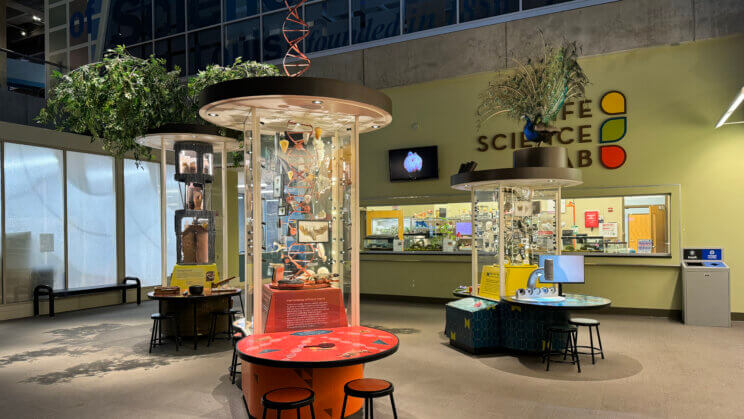
To help illustrate the microscopic structure of DNA, the Science Center’s Exhibits team created a large scale, custom DNA strand out of metal. Rising up through the center of the tower, the metal double-helix also serves as the support for venomous animal specimens from the Science Center’s Collections—a nod to how DNA sequencing eliminates the need for venom samples from living animals. (Take a look behind the scenes at how the team created this piece here.)
In addition to the Life Science Lab Atrium’s updated towers, the gallery answers the question of what it takes to prove a medicine or treatment works (and works safely) before doctors and pharmacists are able to use them with patients.
With the story of James Lind, an 18th century British Royal Navy surgeon stationed aboard the H.M.S. Salisbury, guests can learn about how Lind’s “fair test” to compare different scurvy treatments in 1747 paved the way for today’s modern clinical trials, where many of Lind’s underlying principles of controlled experimentation and careful observation are still applied.
As the biomedical field continues to advance—thanks in part to the work of scientists and researchers right here in the St. Louis region—members of the St. Louis community will be able to visit their Science Center to discover something to spark their curiosity about it.
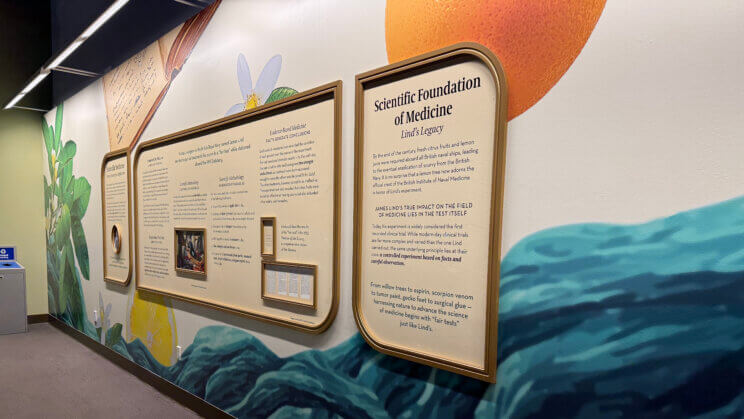
Your Support
Support from donors, Science Center members, and Supporting-level members is instrumental in helping the Science Center continue offering connections to science for everyone in our region. If you’d like to show additional support for our mission, please consider donating to the Science Center’s Curiosity Fund, becoming a member, or becoming a Supporting-level member.
Your Impact
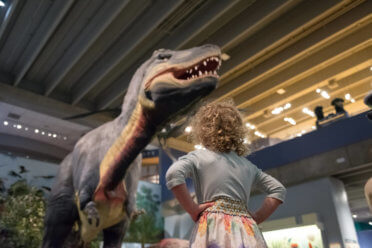
Want to learn more about how the Science Center and its supporters are making a difference for STEM learning in the St. Louis region?






